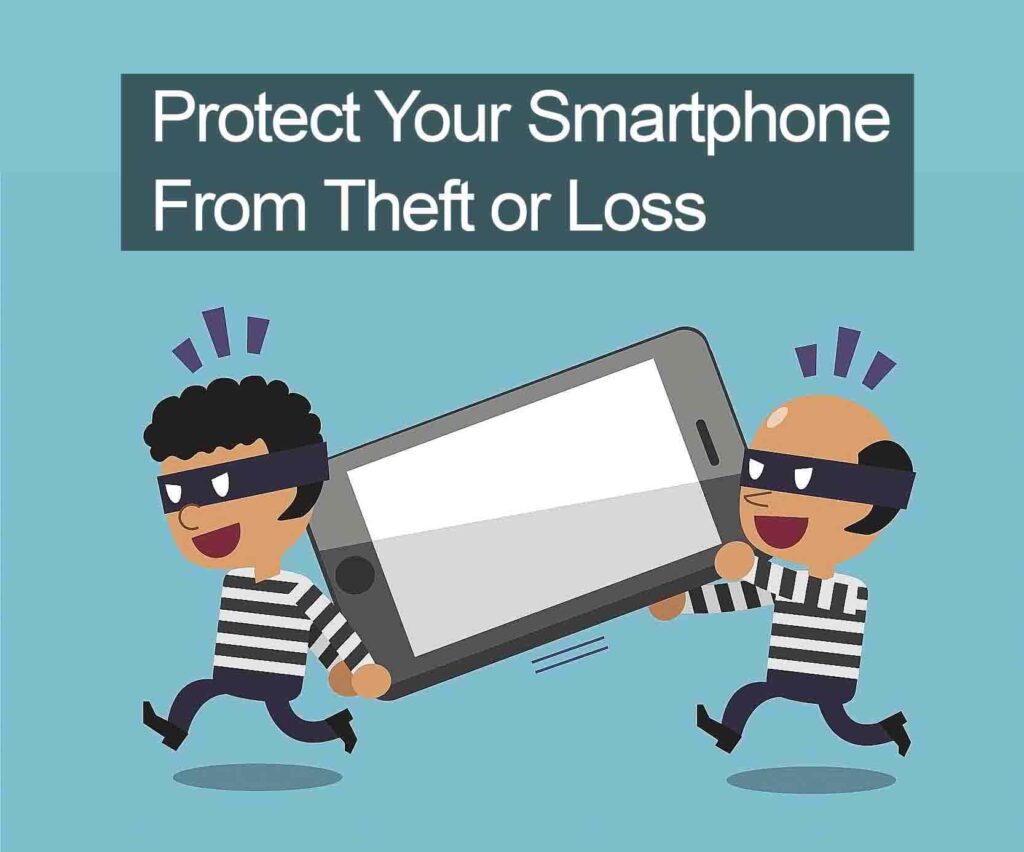Learn more about how to protect data on your smartphone so it doesn’t get stolen, your account doesn’t get hacked, and a lost phone doesn’t become a disaster.

Steps to Protect Your Smartphone From Theft or Loss
No one is safe from smartphone theft. But you can make sure that the thief has a useless thing and not a byte of important information. When you find it missing, the first thing you should do is call your number.
If your smartphone is stolen, your losses may not be limited to the device itself. The thief will do much more damage if he gets his hands on your banking apps, essential documents, personal photos, and videos. To prevent this from happening, it’s better to take care in advance to secure your info. We will tell you how to do it correctly.
How to securely lock your smartphone in case it is stolen or lost
How to make sure that in case of theft, the criminal does not have access to critical information, and you can restore your data on a new smartphone and not worry about anything? Here are some tips:
Set up a screen lock
First, make sure your phone locks its screen. There are different ways to lock your screen, and not all of them are equally reliable. For example, Android doesn’t rely heavily on facial recognition – it can often be fooled by a simple photo, whereas with iPhone, it’s much more reliable. A graphic key is too easy to peek over the shoulder. Plus, people often draw very predictable trajectories, so it’s also not hard to pick.
Long passwords and a fingerprint scanner are the safest. Fingerprinting is also possible, but this technique is inaccessible to common thieves. However, the most important thing is to lock your phone in any way, so use the method that suits you.
Set a PIN-code for the SIM-card
Yes, you’ll have to enter it every time you turn your phone on or change the device, but it’s not very often, and the security is worth it. And, of course, the PIN from the SIM card must be different than the one you use to unlock the phone.
Encrypt your data
Entire Disk Encryption (FDE) is another feature that can help protect your information. If it’s turned on, all files stored on your smartphone are encrypted by default and can’t be read without unlocking your smartphone. On iPhones and smartphones with Android 5 and above, data encryption is enabled by default. For earlier versions of Android, you need to activate it manually.
Password-protect individual apps and notifications from them
Set a separate password or picture key for critical apps: banking and system apps (Google Play or App Store, payment services, and SMS). Then disable notifications for them. Now it will be a little harder for you to read reports and SMS. But it will be almost impossible for others to catch your one-time authorization code or transfer your money into their account. Apps and messages with validation codes will remain inaccessible to them.
Set up data backups
This way, you won’t lose contacts and other information, even if the smartphone can’t be returned. After you buy a new device, you’ll upload your backup data to it and get a clone of your lost phone.
If you don’t want to use the cloud for some reason, you can use your computer to back it up. For example, Apple’s website has detailed instructions on how to do this.
If you don’t want to use the cloud backup service for some reason, you can use your computer to back it up. For example, Apple’s website has detailed instructions on how to do this.
Turn on the ‘Find my Device’ feature.
Find my iPhone (on iOS) and Find my Device (on Android) allow you to track the location of a lost or stolen smartphone through your Google account or Apple ID. They can also be used to remotely lock your device and even wipe all data from it. There is a condition: at the time of the theft or loss, these features must activate. Therefore, it is better to do it without putting it off.
To conclude
With these settings, smartphone theft will remain a nuisance, but it will not be a disaster. The intruder will not get to your confidential files and all the most valuable things you can restore from the backup. Is DDoS illegal? It belongs to internet security read and finds the internet security rules. We wish you never need these measures in practice, but it’s wise to prepare for the worst in advance – just in case.



